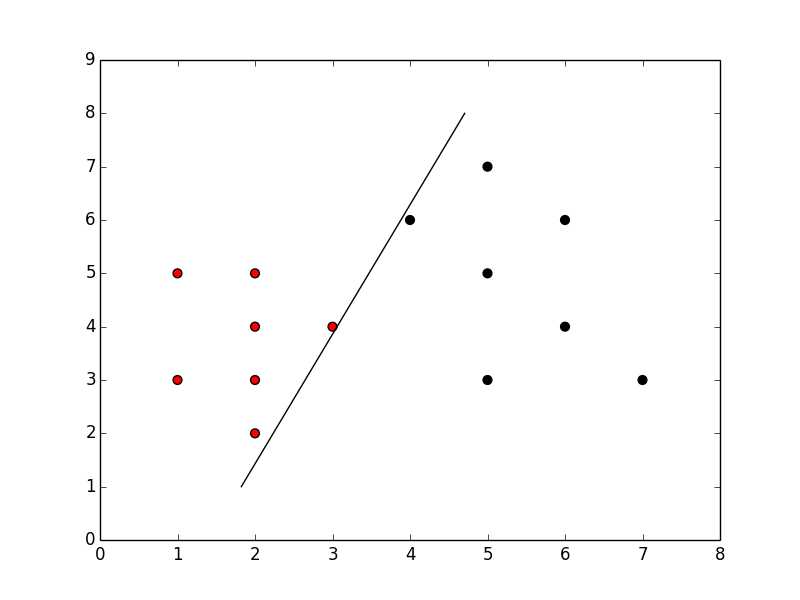标签:
感知机具体说明:见《统计学习方法第二章》。
实现(scikit-learn):
数据集
1 import numpy as np 2 import matplotlib.pyplot as plt 3 from sklearn.linear_model import perceptron 4 5 # Data 6 d = np.array([ 7 [2, 1, 2, 5, 7, 2, 3, 6, 1, 2, 5, 4, 6, 5], 8 [2, 3, 3, 3, 3, 4, 4 ,4 , 5, 5, 5, 6, 6, 7] 9 ]) 10 11 # Labels 12 t = np.array([0, 0, 0, 1, 1, 0, 0, 1, 0, 0, 1, 1, 1, 1]) 13 14 # plot the data 15 colormap = np.array([‘r‘, ‘k‘]) 16 plt.scatter(d[0], d[1], c = colormap[t], s = 40) 17 plt.show()
数据集表示:

处理数据用坐标表示:
1 # rotate the data 180 degrees 2 d90 = np.rot90(d) 3 d90 = np.rot90(d90) 4 d90 = np.rot90(d90)
1 # # create the model 2 net = perceptron.Perceptron(n_iter = 100, verbose = 0, random_state = None, fit_intercept = True, eta0 = 0.002) 3 net.fit(d90, t) 4 5 # # print the results 6 print "Prediction" + str(net.predict(d90)) 7 print "Actual " + str(t) 8 print "Accuracy " + str(net.score(d90, t) * 100) + "%"

测试模型:
1 nX = np.random.random_integers(10, size=(2, 50)) 2 3 # Rotate it the same as the previous data 4 nX90 = np.rot90(nX) 5 nX90 = np.rot90(nX90) 6 nX90 = np.rot90(nX90) 7 8 # # set predication as the predication results 9 predication = net.predict(nX90) 10 11 # # Print to have a look 12 print predication 13 plt.scatter(nX[0], nX[1], c = colormap[predication], s = 40) 14 15 # now plot the hyperplane 16 ymin, ymax = plt.ylim() 17 # # cal 18 w = net.coef_[0] 19 a = -w[0] / w[1] 20 xx = np.linspace(ymin, ymax) 21 yy = a * xx - (net.intercept_[0])/ w[1] 22 plt.plot(yy, xx, ‘k-‘) 23 plt.show()

[Machine Learning]感知机(Perceptron)
标签:
原文地址:http://www.cnblogs.com/skycore/p/5096145.html